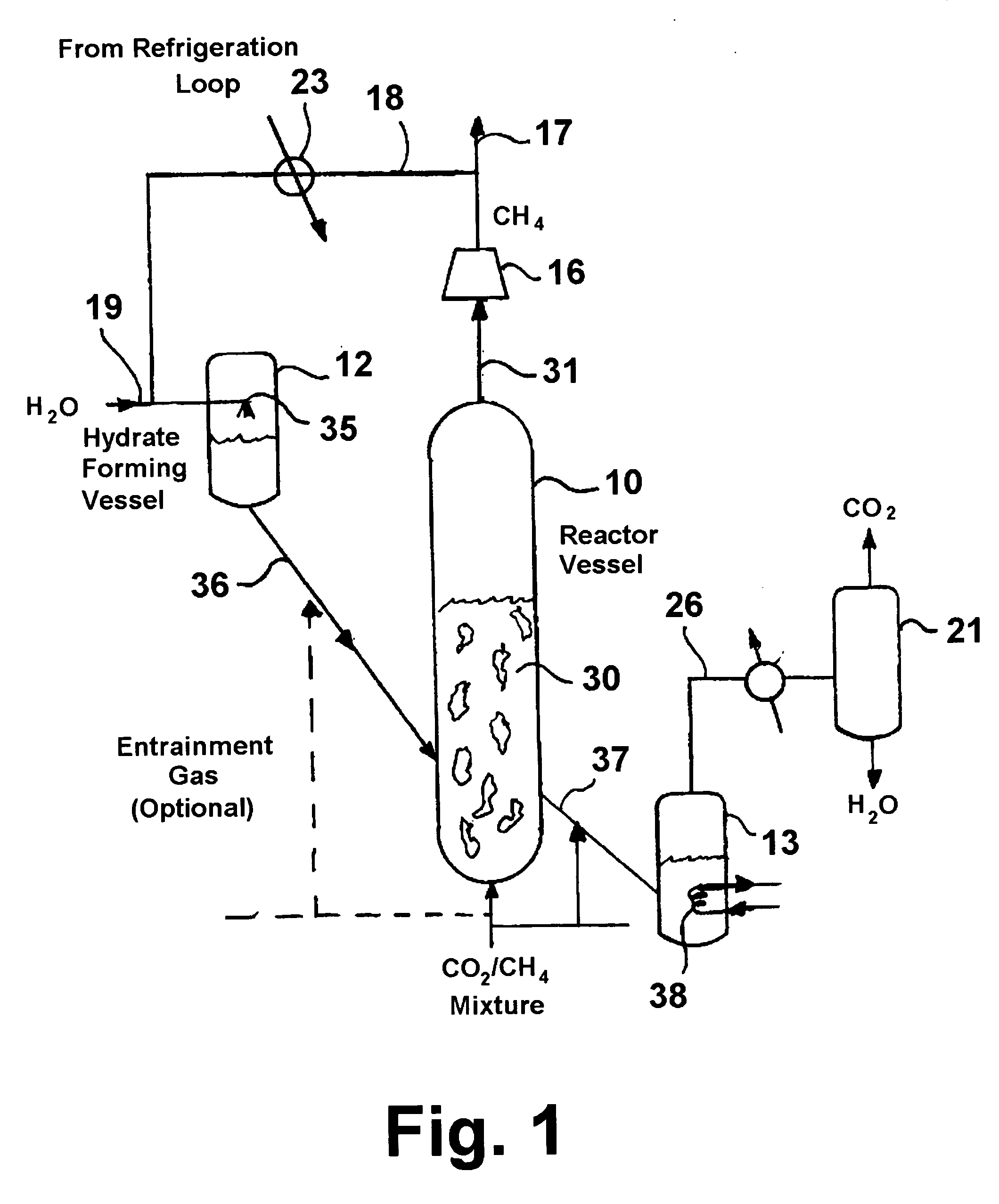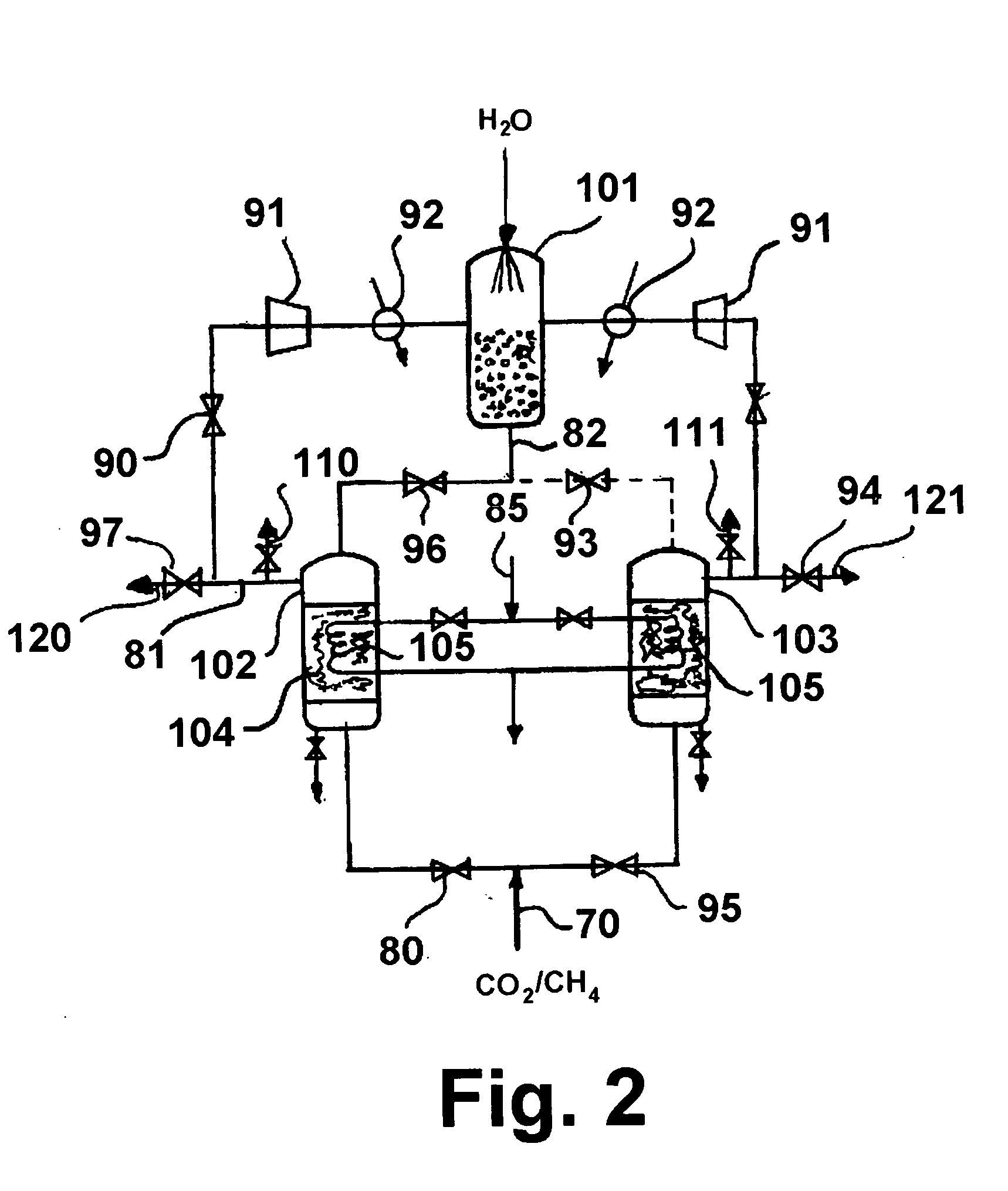Process for separating carbon dioxide and methane
a technology of carbon dioxide and methane, which is applied in the direction of separation processes, hydrogen sulfides, sulfur compounds, etc., can solve the problems of high production cost, inability to economically produce natural gas, and inability to meet the requirements of processing, so as to achieve the effect of minimizing downstream compression costs or overall process equipment costs, and easy separation
- Summary
- Abstract
- Description
- Claims
- Application Information
AI Technical Summary
Benefits of technology
Problems solved by technology
Method used
Image
Examples
Embodiment Construction
[0016] The invention claimed herein is a process whereby a gas stream, such as sub-quality natural gas, comprising a high concentration of carbon dioxide (defined herein as being greater than about 30% by volume), is introduced into a reactor vessel to contact methane hydrate solids disposed within the reactor vessel to effect the transfer of carbon dioxide into the structure of the hydrate and, in so doing, liberate the methane, producing methane-enriched gas. A stream of carbon dioxide enriched hydrate is withdrawn from the reactor vessel and decomposed to its constituent elements, carbon dioxide and water, which can, if desired, be separated into pure carbon dioxide and water by well known means. Suitable reactor vessels for use in the method of this invention include, but are not limited to, fluidized bed, fixed bed, and transport reactors. The methane-enriched gas produced in the process of this invention may be sent to a methane hydrate forming apparatus, which may consist of ...
PUM
| Property | Measurement | Unit |
|---|---|---|
| temperature | aaaaa | aaaaa |
| volume | aaaaa | aaaaa |
| stable | aaaaa | aaaaa |
Abstract
Description
Claims
Application Information
 Login to View More
Login to View More - R&D
- Intellectual Property
- Life Sciences
- Materials
- Tech Scout
- Unparalleled Data Quality
- Higher Quality Content
- 60% Fewer Hallucinations
Browse by: Latest US Patents, China's latest patents, Technical Efficacy Thesaurus, Application Domain, Technology Topic, Popular Technical Reports.
© 2025 PatSnap. All rights reserved.Legal|Privacy policy|Modern Slavery Act Transparency Statement|Sitemap|About US| Contact US: help@patsnap.com



